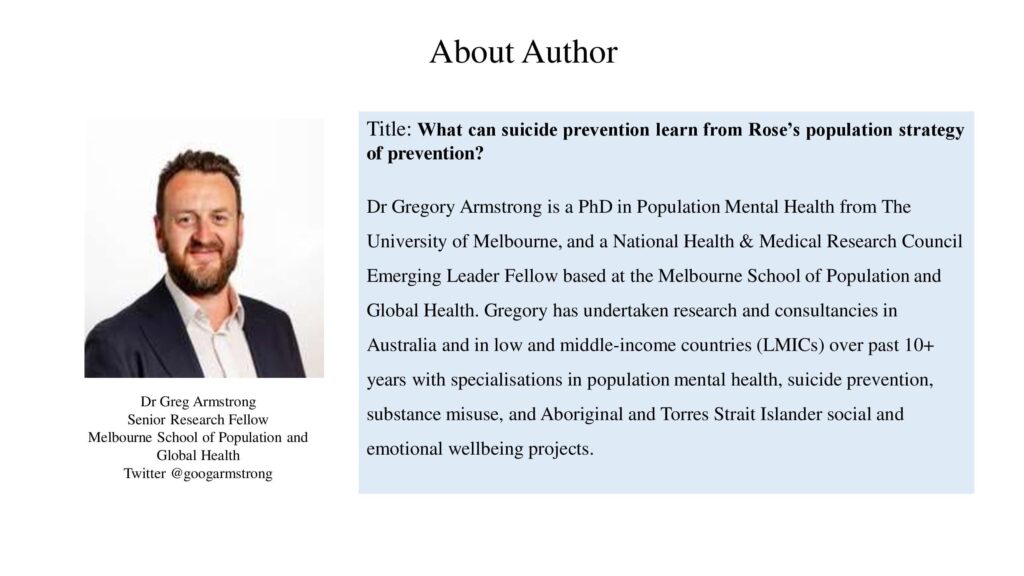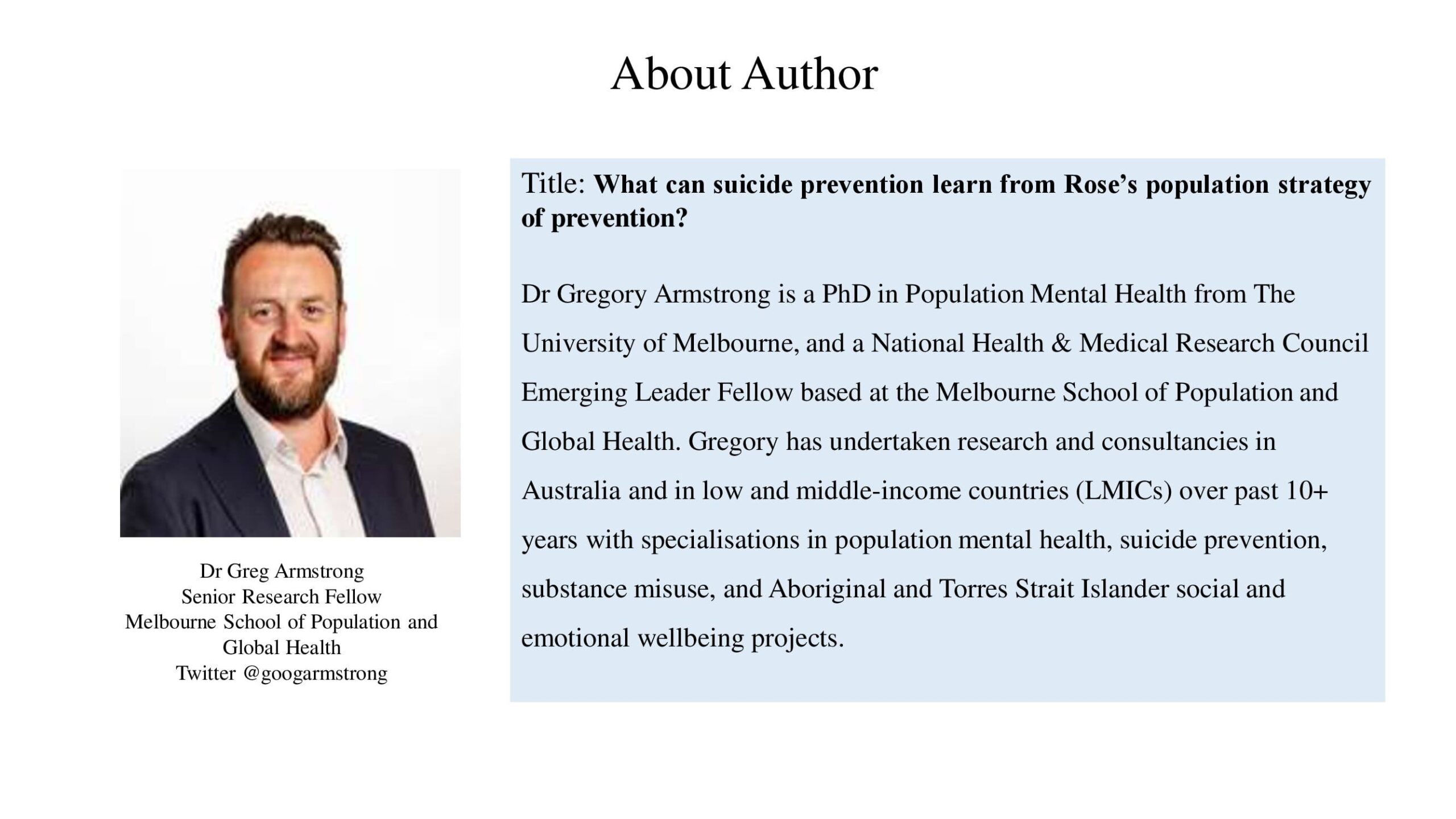Guest Editorial

Melbourne School of Population and Global Health
Twitter @googarmstrong
Volume 12 Issues 7 July, 2022
Geoffrey Rose’s 1985 paper, Sick individuals, and sick populations drew a distinction between the causes of illness at the individual level and the population level(1). Health care typically focuses on individuals presenting with symptoms of illness, or screening for individuals at high risk of some adverse health outcome (e.g., blood pressure as a risk factor for cardiovascular disease). However, Rose highlighted that a population strategy of prevention looks to prevention activities that target a whole population, regardless of an individual’s risk status. By Rose’s thinking, more cases of disease come from those at moderate risk (numerous) than from those at high risk (few). At heart, the idea is that by reducing a risk factor by a small amount in the general population, we can prevent more cases of disease than by reducing a risk factor by a large amount in those individuals at high risk.
We are all becoming increasingly aware that suicide is an insidious, complex, and highly stigmatised public health problem in India. Despite global suicide rates reducing 33% since 1990, suicide rates remain stubbornly high in India, the location of 3 in 10 global suicides. What can we learn from Rose’s population strategy of prevention to help us tackle this problem?
If our sole strategy in suicide prevention is to assess and treat high-risk individuals in clinical settings, then we won’t win this battle. This is not to say that addressing suicidality among individuals at high risk is not an essential activity; it is, and we particularly need to address the substantially heightened risk of suicide in individuals experiencing mental disorders. However, over the past half-century, clinical practice with individuals experiencing mental disorders has long been dominated by attempts to predict who is at risk of suicide and to implement measures to reduce that risk. Yet, there is increasing evidence that suicide risk prediction, whether using clinical judgement or risk prediction tools, is ineffective. Research in the UK found that for psychiatric in-patients who had died by suicide, 85% of their mental health clinicians had (at last service contact) estimated the patient’s immediate risk of suicide to be low or absent, and 59% had rated the patient’s long-term risk of suicide to be low or negligible. A study in the US observed that two-thirds of psychiatric patients who died by suicide had denied having suicidal thoughts at an assessment within 30 days of their death, many within two days of their death. Debates will no doubt continue to rage around mechanisms to improve risk assessment. However, contemporary thinking is now starting to advocate that we should instead (as many clinicians already do) be investing time in gaining therapeutic alliance and building a collaborative safety plan rather than ticking boxes on a risk assessment formulation.

Moreover, we need to recognise that suicide prevention is not solely or even primarily the domain of mental health practitioners providing interventions for suicidal individuals. Suicidal behaviours are shaped by our social, cultural, economic, and physical environments, and we may have a bigger impact by targeting population-level drivers of suicide, reaching the many at moderate risk of suicide. As such, suicide prevention should be grounded in a broader public health approach framed around multisectoral collaboration and equal acknowledgement of the socioeconomic and cultural determinants of suicide. Population-level approaches such as responsible media coverage of suicides (in both fictional and non-fictional media) and restricting access to the means of suicide (e.g., removing highly hazardous pesticides from agricultural practices) should feature prominently. Culturally, there are important issues to address such as intergenerational tension, gender norms, and the social pressures on young people, which can be viewed through a suicide prevention lens. Social and economic policies are also important and can draw on research that has highlighted the importance of addressing social risks for suicide (for example, housing insecurity, financial strain, abuse of children, and discrimination and marginalisation of minorities). To inform us further, we need natural experiments to track the impact of social policies on suicide rates.
For any of this to happen, we need a clear and coherent suicide prevention plan at a national level that truly sits across ministries. We also need state and community-level plans that are responsive to local needs. Plans won’t save lives on their own, but they can galvanise political and community will and resources and give us a population-level framing to address this complex public health tragedy.
Reference:

